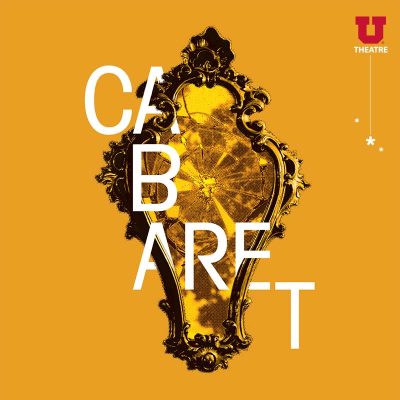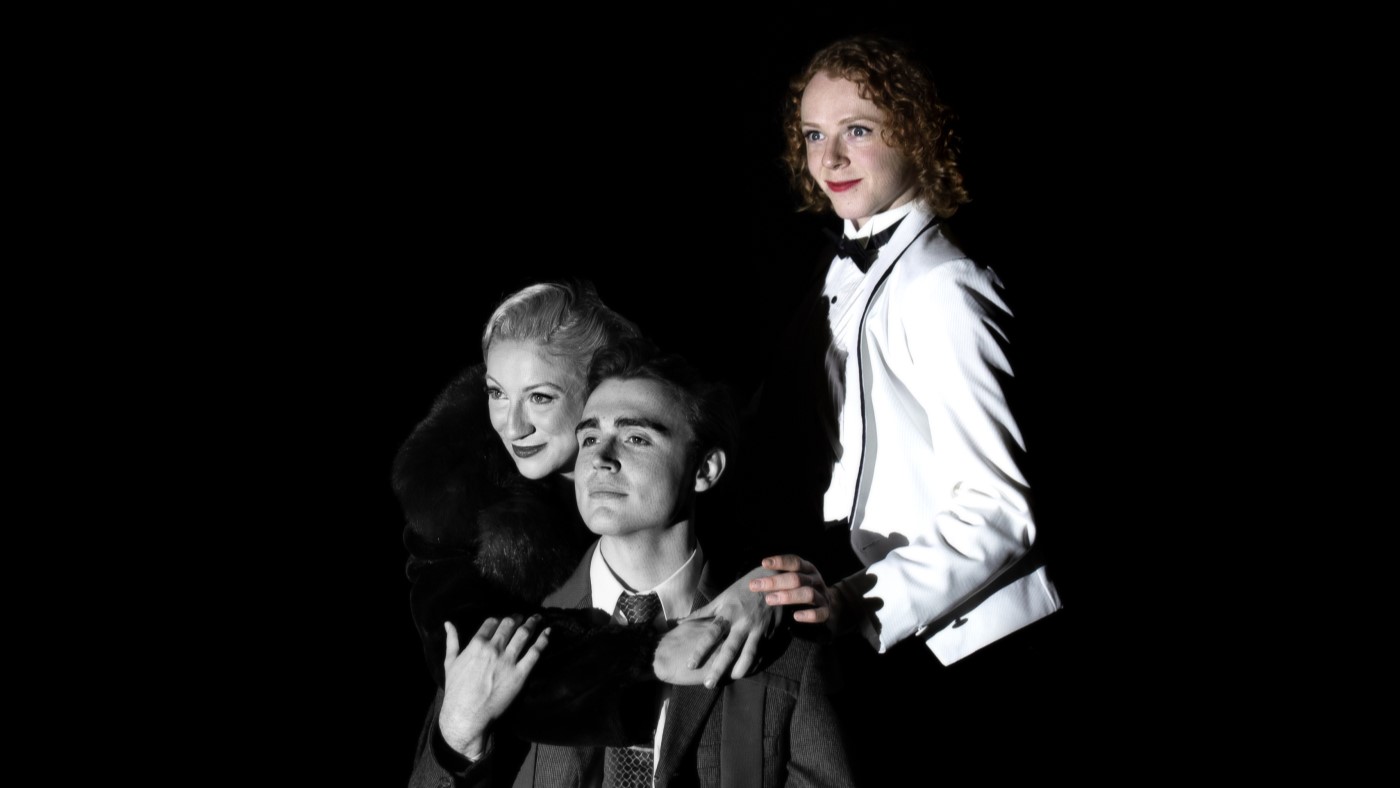SALT LAKE CITY — Cabaret, featuring music by John Kander, lyrics by Fred Ebb, and a book by Joe Masteroff, originally opened on Broadway in 1966 and has been revived and reimagined several times since then. Winning Tony Awards for Best Musical and Best Original Score in 1967, and again in 1998 for Best Musical Revival, Cabaret has proven to stand the test of time and now seems as relevant today as it ever was. Although the musical is a raucous and energetic spectacle, there is an immense amount of depth to be unpacked as it deals with complex characters and themes of social justice and political control. The University of Utah’s production succeeds under the keen direction of David Eggers. The dramatic action and themes are thoughtfully explored in a way that causes discomfort and self reflection about our place in the world, and how we address the ever present issues of hate and prejudice.

Set in Germany’s Weimar Republic in 1930, Berlin saw an unusual state of both economic turmoil and hardship, yet flourishing artistically. This led to the rise of cabaret clubs that featured music, entertainment and dark humor, meant to titillate and highlight taboo and political topics. Cabaret largely takes place within one such place, the seedy Kit Kat Club, and follows the relationship between the leading performer at the club, Sally Bowles (played by Hannah Staudinger) and American writer Clifford Bradshaw (played by Caleb Hunt). Interspersed with exciting cabaret scenes, the Master of Ceremonies (played by Evan K Beesley) lingers in the background, weaving in and out of scenes that take place outside of the club as to remind the audience of the flashy, beautiful life within the club and the increasingly harsh realities of the outside world. As the Nazis begin to rise to power, the characters become disenchanted as they assume a frightening political climate.
Acting from the cast was commendable, though some of the ensemble members were stronger than others. This variability was more noticeable in the women, as some of the Kit Kat Club girls were simply more animated in their expression. During the larger dance numbers, there were times when many of the girls seemed winded or disinterested, looking down at the floor straight-faced. On the contrary, in slower moments I appreciated their presence in the background of scenes where they were typically invested in the action onstage, bouncing to the music and helping to set a more sensual tone.
As Salley Bowels, Staudinger is fun and quirky, immediately drawing attention. I enjoyed her cheeky persona in the song “Don’t Tell Mama.” Her standout musical number “Maybe This Time,” was powerfully performed, displaying raw emotion and desire. Staudinger’s sultry, deep voice fit the character perfectly and also nicely offset the ensemble of the other girls’ more wispy and light singing. This was especially apparent in the energetic musical number “Mein Herr.”
Beesley is exuberant as the Master of Ceremonies. While I was initially worried that Beesley would be able to pull off the animated and flamboyant character, Beelsey’s commitment to the role was apparent and the character became stronger as the production progressed. The Emcee is a challenging role, as the multi-dimensional character encompasses many emotions and functions in various ways, including as a bridge between the world inside the club and that outside. Serving as the main entertainer and host of the Kit Kat Club, Beesley gave a nuanced and articulated performance that balanced sex appeal, humor, gender-bending, and vulnerability. I also believe that several of the more exaggerated and campy scenes, such as the number “Two Ladies,” only worked so well because of the dedication from the actors, particularly Beesley who was not afraid to hold back.
All of the design elements worked cohesively together to create a believable and intimate atmosphere for the club. Scenic designer Keven Myhre created an impressive moving set with a sliding platform on a rectangular stage. The platform aided in scene changes tremendously, making it easy to switch locations from inside and out of the club. A live orchestra sat on both ends of the stage which I thought was a nice touch, creating a surround sound effect. On the walls hung painted curtains that looked like windows with smiling and laughing people in them. I really enjoyed the aesthetic for what they were, but I was even more impressed when they fell at the end of the play, likely symbolizing the end of good times and an ominous future.
Sound design by Claudia Escobar and music direction from Trevor Jex provided dissonant sounds and music that at times created a chaotic and jarring mood. The dramatic musical effects aid the action onstage and help cause an intended discomfort. The live orchestra refreshingly provided accompanying jazz music indicative of the time. Lighting design by Nikayla Nielson was also nice, and I especially appreciated it when the house lights came up towards the end of Act Two and the entire audience was lit, adding an immersive element to the show and turning the focus onto the viewer. This choice forces the audience to be aware of themselves and their fellow audience members within the context of the world of the play, encouraging them to reflect personally on their thoughts, feelings, and actions, as well as those around them.
Revisiting a review I wrote about a different production of Cabaret back in 2016, I said that the play forces a societal commentary that not only sheds light on horrendous past events, but connects our society now in America to that of Germany in the early 1930s. This feels even more timely than it did seven years ago. According to the production’s program, anti-Semitic incidents are at an all-time high, and have increased 36% since 2021. These statistics were harrowing to me, though not very shocking considering many recent news events surrounding this issue, including the anti-Semetic protests taking place outside the broadway theatre currently producing Parade, a musical that deals with similar themes. Other controversial themes addressed in Cabaret that seem particularly pertinent right now include abortion, sex work and homophobia, among others.
I commend the University of Utah for producing such socially conscious material at a time when it is politically relevant. The message that everyone can take a deeper look at themself to improve how they treat others resonated. This production of Cabaret was a reminder that people cannot be passive about issues like racism, equality, and the political implications of governmental control. The more I reflected on this production, the more I appreciated the University of Utah’s Cabaret. And it still has me singing the music days later.
[box]Cabaret plays Thursdays through Sundays at 7:3 PM and Saturdays and Sundays at 2 PM through April 16 at the Babcock Theater (300 South 1400 East, Salt Lake City) on the campus of the University of Utah. Tickets are $7.50-17.50. For more information, visit theatre.utah.edu.[/box]

